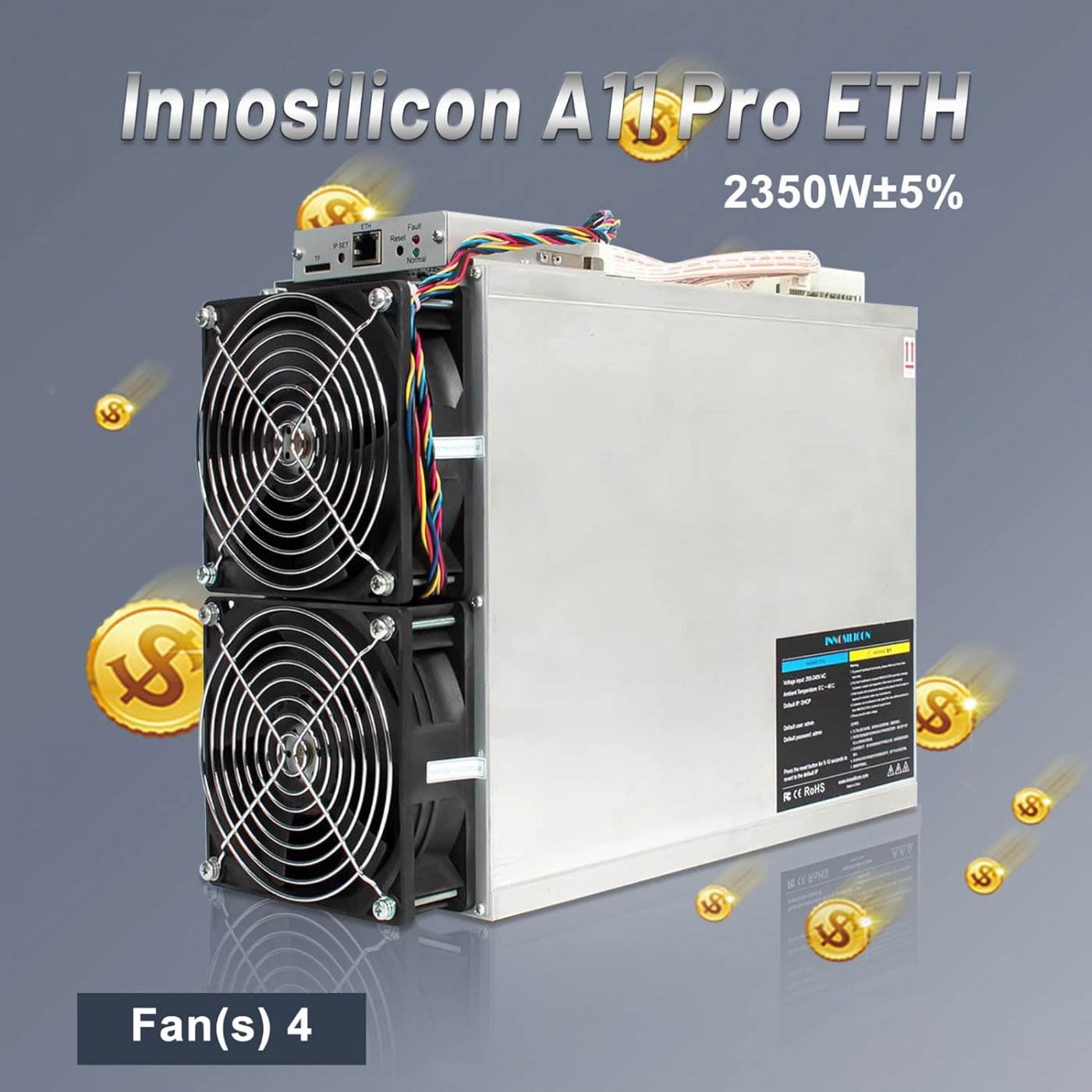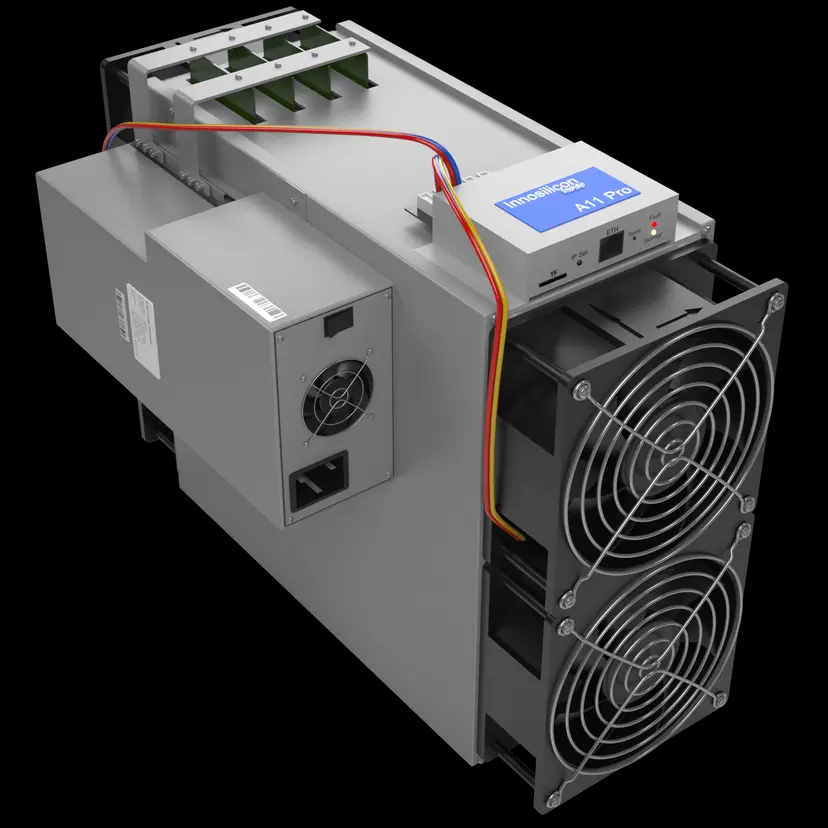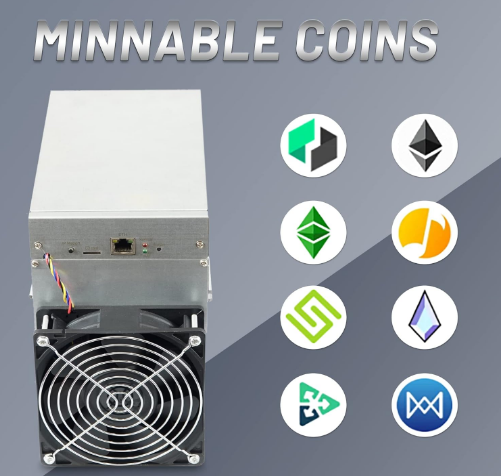How to calculate mining profitability for Innosilicon A11 Pro 1500 Mh/s?
How to Calculate Mining Profitability for Innosilicon A11 Pro 1500 Mh/s?
Cryptocurrency mining has evolved into a highly competitive industry where profitability hinges on the right combination of hardware, energy efficiency, and operational strategy. The Innosilicon A11 Pro 1500 Mh/s Ethereum Miner stands out as a powerful and efficient solution for Ethereum Classic (ETC) mining, offering a remarkable hashrate of 1500 Mh/s with an energy efficiency ratio of 1.57 J/Mh. However, to determine whether this miner is a worthwhile investment, it’s essential to understand how to calculate its mining profitability. This article will guide you through the process, providing practical insights and real-world applications to help you make informed decisions.
Understanding the Innosilicon A11 Pro 1500 Mh/s
Before diving into profitability calculations, let’s briefly explore what makes the Innosilicon A11 Pro a standout choice for ETC mining.
Key Features and Advantages
- High Hashrate: With a hashrate of 1500 Mh/s, the A11 Pro delivers exceptional mining performance, making it ideal for both small-scale and large-scale operations.
- Energy Efficiency: Its energy efficiency ratio of 1.57 J/Mh ensures that operational costs are kept low, a critical factor in maximizing profitability.
- Thermal Management: The quad-fan cooling system maintains optimal operating temperatures, ensuring consistent performance and longevity.
- Compact Design: Measuring just 238 x 297 x 178mm and weighing 7.7kg, the A11 Pro is easy to transport and integrate into existing setups.
- Future-Ready Architecture: With 8GB of memory and optimized EtHash implementation, this miner is well-suited for the evolving ETC ecosystem.
These features make the A11 Pro a compelling option for miners looking to balance performance, efficiency, and sustainability.

Factors Affecting Mining Profitability
To calculate the profitability of the Innosilicon A11 Pro, you need to consider several key factors:
- Hashrate: The miner’s computational power, measured in megahashes per second (Mh/s).
- Power Consumption: The amount of electricity the miner consumes, typically measured in watts (W).
- Electricity Cost: The cost of electricity in your region, usually measured in kilowatt-hours (kWh).
- Mining Difficulty: The complexity of solving cryptographic puzzles, which can fluctuate based on network activity.
- Block Reward: The amount of cryptocurrency awarded for successfully mining a block.
- Pool Fees: If you’re part of a mining pool, fees may apply.
- Hardware Costs: The initial investment in the miner itself.
- Maintenance and Cooling Costs: Ongoing expenses related to upkeep and environmental control.
Step-by-Step Profitability Calculation
Let’s break down the process of calculating profitability using the Innosilicon A11 Pro as an example.
Step 1: Gather Essential Data
- Hashrate: 1500 Mh/s
- Power Consumption: 2350W
- Electricity Cost: Assume $0.10 per kWh (adjust based on your location)
- Mining Difficulty: Use current network data from platforms like Etherscan or CoinWarz.
- Block Reward: Current ETC block reward (e.g., 3.2 ETC as of October 2023).
- Pool Fees: Typically 1-2% (if applicable).
Step 2: Calculate Daily Revenue
Use a mining profitability calculator or the following formula:
\[ \text{Daily Revenue} = \frac{\text{Hashrate} \times \text{Block Reward} \times 86400}{\text{Mining Difficulty} \times 2^{32}} \]

For example, if the mining difficulty is 5,000,000,000,000 and the block reward is 3.2 ETC:
\[ \text{Daily Revenue} = \frac{1500 \times 3.2 \times 86400}{5000000000000 \times 4294967296} \approx 0.19 \text{ ETC/day} \]
Step 3: Calculate Daily Operating Costs
\[ \text{Daily Power Cost} = \frac{\text{Power Consumption (W)} \times 24}{1000} \times \text{Electricity Cost} \]

For the A11 Pro:
\[ \text{Daily Power Cost} = \frac{2350 \times 24}{1000} \times 0.10 = \$5.64 \text{ per day} \]
Step 4: Determine Net Daily Profit
\[ \text{Net Daily Profit} = \text{Daily Revenue} – \text{Daily Power Cost} \]
Using the above example:
\[ \text{Net Daily Profit} = 0.19 \text{ ETC} – \$5.64 \]
Convert ETC to USD using the current exchange rate. If 1 ETC = \$20:
\[ \text{Net Daily Profit} = \$3.80 – \$5.64 = -\$1.84 \]
This negative value indicates a loss, highlighting the importance of monitoring market conditions and adjusting calculations accordingly.
Step 5: Factor in Additional Costs
Include hardware costs, maintenance, and cooling expenses to get a comprehensive view of profitability. For instance, if the A11 Pro costs \$3,000 and has a lifespan of 2 years:
\[ \text{Daily Hardware Cost} = \frac{\$3000}{730} \approx \$4.11 \text{ per day} \]
Adding this to the daily power cost:
\[ \text{Total Daily Cost} = \$5.64 + \$4.11 = \$9.75 \]
Re-evaluating net profit:
\[ \text{Net Daily Profit} = \$3.80 – \$9.75 = -\$5.95 \]
Optimizing Profitability
While the above example shows a loss, several strategies can improve profitability:
- Reduce Electricity Costs: Consider relocating to regions with lower electricity rates or using renewable energy sources.
- Join a Mining Pool: Pooling resources can increase your chances of earning rewards, offsetting individual costs.
- Monitor Market Trends: Stay updated on ETC price fluctuations and mining difficulty changes.
- Upgrade Hardware: Invest in more efficient miners or optimize your existing setup.
- Leverage Tax Incentives: Explore tax deductions or credits for mining operations in your region.
Real-World Application
Let’s consider a scenario where electricity costs are reduced to \$0.06/kWh and the ETC price increases to \$25:

\[ \text{Daily Power Cost} = \frac{2350 \times 24}{1000} \times 0.06 = \$3.38 \] \[ \text{Daily Revenue} = 0.19 \times 25 = \$4.75 \] \[ \text{Net Daily Profit} = \$4.75 – \$3.38 = \$1.37 \]
With these adjustments, the A11 Pro becomes profitable, demonstrating the impact of external factors on mining outcomes.
Conclusion
The Innosilicon A11 Pro 1500 Mh/s is a powerful and efficient miner designed for ETC mining, but its profitability depends on various factors, including electricity costs, market conditions, and operational strategies. By carefully calculating and optimizing these variables, you can maximize your returns and make the most of this advanced mining solution. Whether you’re a seasoned miner or just starting, understanding these principles is key to achieving long-term success in the competitive world of cryptocurrency mining.